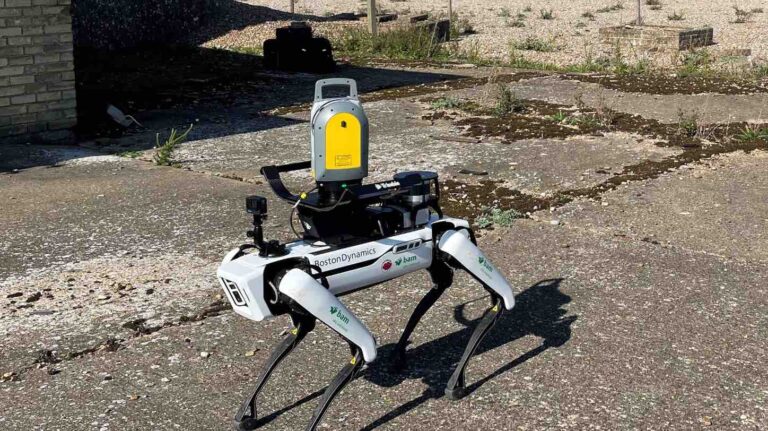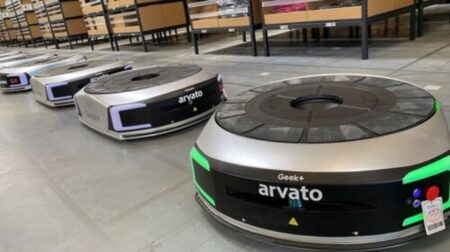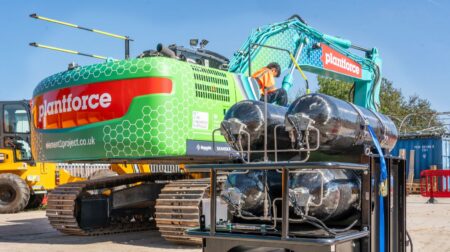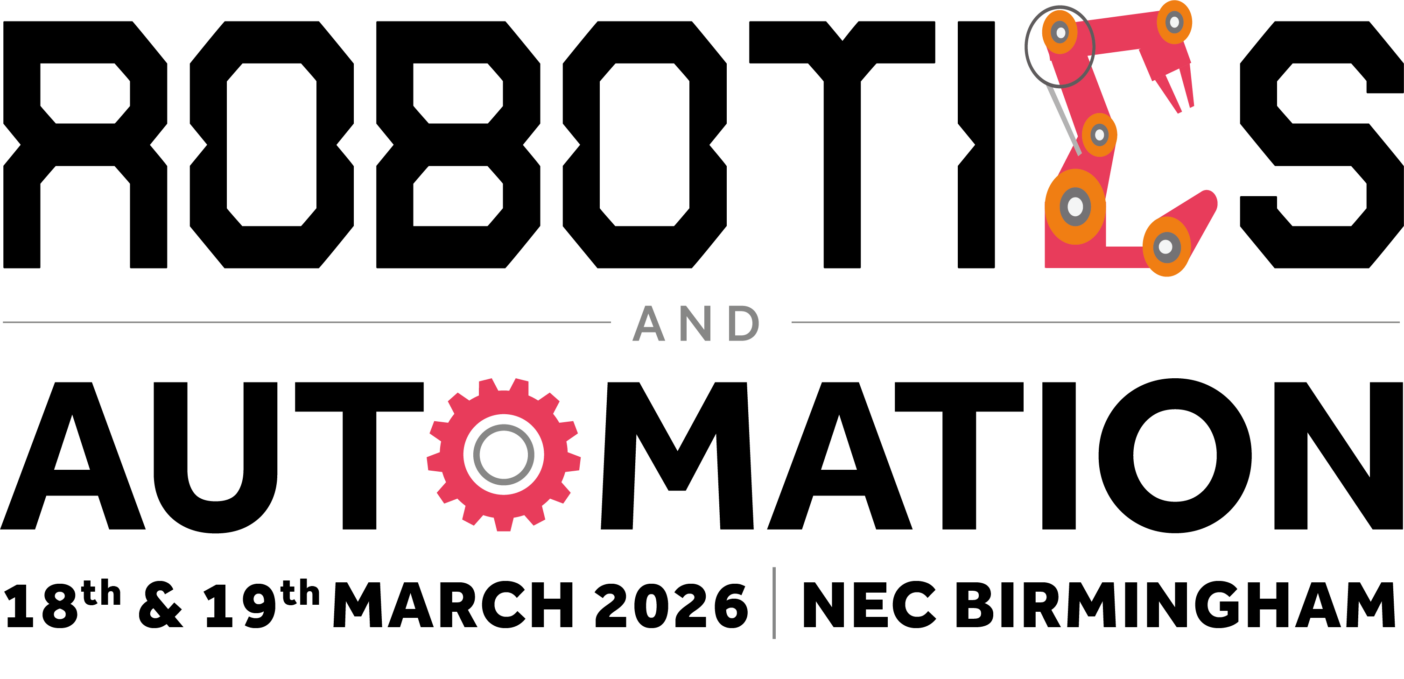A robotic dog has been used by the National Trust to survey two former Cold War weapons testing facilities deemed unsafe for humans to enter due to decaying concrete.
Constructed in 1960, the historic buildings at the Orford Ness Nature Reserve were used as test cells to carry out environmental tests on the atomic bomb during the Cold War and have been off-limits to National Trust visitors and staff for several years.
The tests were designed to mimic the rigours to which a weapon might be subjected before detonation, including vibration, extremes of temperature, shocks and G forces.
The two laboratories, known as pagodas or Labs 4 and 5, are classified as scheduled monuments.
UK construction and civil engineering company BAM is working with the National Trust to deploy advanced surveying technology at the sensitive historic site, using drones and dog-like robot Spot, manufactured by US technology firm Boston Dynamics and equipped with a Trimble X7 scanner.
Spot has a camera mounted to the top and four hinged ‘legs’, which allow BAM to control it remotely and from a safe distance.
READ MORE: Drones trialled at Sellafield to identify unknown radiation hotspots
Glen Pearce, operations manager at Orford Ness, said: “This is a really exciting opportunity for us to see inside Labs 4 and 5 – the ‘pagodas’.
“The buildings have always had a certain mystery about them.
“When they were built and in use during the Cold War, they were shrouded in secrecy, and after they were decommissioned, they fell into disrepair.
“Nobody has been able to go inside for several years due to safety concerns.
“This is the first time the National Trust has employed this kind of technology and it’s a key part of our commitment to ongoing research at our places.
“If successful, it could change the way we – and our visitors – engage with the structures at Orford Ness as well as other scheduled monuments and buildings deemed unsafe to enter.”
The work is the first stage of a longer-term National Trust project, involving partnerships with Historic England, BAM and University College London’s Bartlett School for Sustainable Construction.
Colin Evison, innovation technical lead at BAM, said: “The robot is an ideal method to deploy surveying equipment in and around the decaying structures sited in an environmentally sensitive location and the mission will provide us with valuable experience and feedback on using the survey technology, as well as the opportunity to exchange knowledge with the National Trust and other participants.
“We are sure that the outcome of the surveying mission will be a comprehensive and valuable record of this historic environment for future generations.”
The National Trust acquired the site from the UK Ministry of Defence in 1993, but no measured surveys have been completed of the buildings before.
As scheduled monuments, they have the same designation as Stonehenge or Sutton Hoo, another National Trust-owned site nearby.
In the last few years, the pagodas have also become part of the National Trust’s ‘curated decay’ policy and the roofs have become nesting sites for lesser black-backed gulls, which are on the UK’s amber conservation list.
Innovations and achievements in the use of robotics in extreme environments will be highlighted and celebrated at first-ever Robotics & Automation Awards on 31 October 2023 at the De Vere Grand Connaught Rooms in London. Please visit www.roboticsandautomationawards.co.uk to learn more about this unmissable industry event – and to book your table today!









